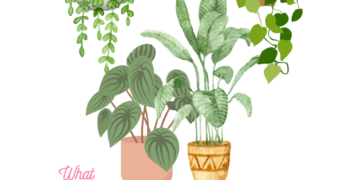I will state an unpopular opinion–I am so glad that we are seeing the end of summer. I am a cold-weather gal and have felt wilted since about June 1st. That said, I know that the end of summer means the end of gardening which is also bittersweet. While going out to see what could be salvaged in my woefully neglected raised beds, I realized it had been a while since I pulled the carrots that I planted in my “chaos carrots” bed. To my surprise, I found about six big, purple roots ready to pull! They got me thinking about the colorful vegetable and led me to some carroty research.
First, I was surprised to find that carrots are not actually vegetables. In fact, nothing is–there is no botanical category called “vegetable” only roots, stems, leaves, shoots, seeds, flower buds, flower or seedpods. We commonly eat the carrot root, but did you know that all parts of the carrot plant are edible? I have yet to try any other part, but did read that carrot leaves make a good pesto, and carrot flowers can even be made into jelly! Perhaps if my remaining carrots flower I will give that a go.
I did, however, find it sad to throw out the gorgeous greenery provided by the carrot plant, and added them to a pitcher with some Black-Eyed Susans for a simple yet lovely bouquet. It smelled so fresh and lovely. Here’s a photo:
Something else that I found interesting about carrots is that they are actually more beneficial for you cooked than raw. Quite often we are told that cooking fruits and vegetables take out some of the more important nutrients, but in the case for carrots cooking actually releases more beta-carotene! Raw carrots when consumed will provide you with 3% of the carrot’s carotene, while when cooked it can release up to 40%. That’s quite a large difference! Beta-carotene is what gives plants like carrots its signature yellow-orange hue, and changes to Vitamin A in our bodies as we consume them. It helps with eyesight, immunity and helps you keep your skin healthy. In our human past, herbalists also believed that carrots seeds could cure kidney stones, pleurisy and infertility. A poultice of ground up carrot was often used to help cure animal bites and cancerous lesions.
There are some fun folk stories surrounding carrots that I discovered while finding information for this article. One story involved a seed merchant dropping a carrot seed from his pack while crossing the Rhine. The resulting seed grew a carrot so large that the farmer that found it was able to feed his two oxen for the entire winter. As a result, the oxen grew so large, that when one of their horns was used to blow through to make a sound, it travelled across the world from St. Martin’s Day (November 11) through to St. George’s Day (April 23). That’s quite a large sound from quite a large horn!
Another famous story by E. T. A. Hoffmann called The King’s Bride featured vegetable gardener Anne von Zabeltan who was so beautiful she caught the attention of the gnome carrot king Daucus Carota the First. He kidnapped her to be his bride and kept her deep underground in his wormy, root-filled kingdom. One day, he witnessed his rooty subjects being harvested, chopped and added to a boiling pot. He could not handle their screams and went to save them, only to fall into the cookpot himself and get boiled along with the others. Anne was finally free and escaped back to her home.
While we are approaching the natural ends of harvesting most of the tasty veggies and fruits, carrots can perservere through the winter and be harvested throughout. It is suggested that after the first light frost, any remaining planted carrots should be covered with about a foot of leaf litter to keep them warm and cozy. They can then be harvested as the winter progresses, or wait patiently for spring to see the sun. Either way, keeping them over winter concentrates the sugars and makes for a sweeter crunchy treat. Happy snacking!


































